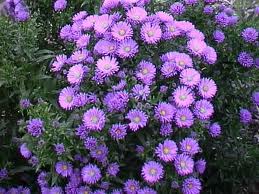This site contains thousands of beautiful pictures of flowers, wedding and garden landscapes.
Sunday, August 14, 2011
Aster Flowers Growing Environment
Daisy is a type of chrysanthemum that had been copied by most employers cut flowers. Before the development of technology, this flower only blooms once in certain seasons and in the summer months most of the parks have exhausted their interest, and even some already asleep, because of the heat, but little development will continue with the rain falling, to earn interest better each year.
Even with the development technology in August and September, we can cultivate these flowering plants, such as the name suggests, this plant blooms only during the last weeks' summer until early autumn. Various other species, also grows in the gardens of the last century, for the flowering abundance and ease of cultivation.
In general the term refers to aster novae angliae and novi Settembrini Belgium, but actually there are many types of daisies bloom in late summer and autumn; Aster dumosus Aster novae angliae Aster divaricatus Aster Aster novi Belgium tripolium diffusus tataricus It.
To grow as a perennial, this plant has a bushy growth, which reached 40-90 cm, depending on the species.
The structure of plant stems are slender, woody, densely branched and bears a small fall. The flowers are daisy, and count the many petals; Settembrini generally in shades of pink and lilac, but there are varieties with white flowers with yellow centers. Each plant produces many flowers, medium size, producing large blobs of color. Generally in areas with dry winter air in the winter, to begin to develop from late spring.
These plants grow very demanding in places shaded or partially sunny, and also adapt to the common garden soil. For more abundant blooms you have to develop this plant in rich soil element of a good, well drained, and provide organic fertilizer in late spring.
Plants family with chrysanthemum daisies which have now been developed with better in different parts of the world with technology that is more adequate. In a previous article also explained about the cultivation of chrysanthemums.
Subscribe to:
Post Comments (Atom)


No comments:
Post a Comment